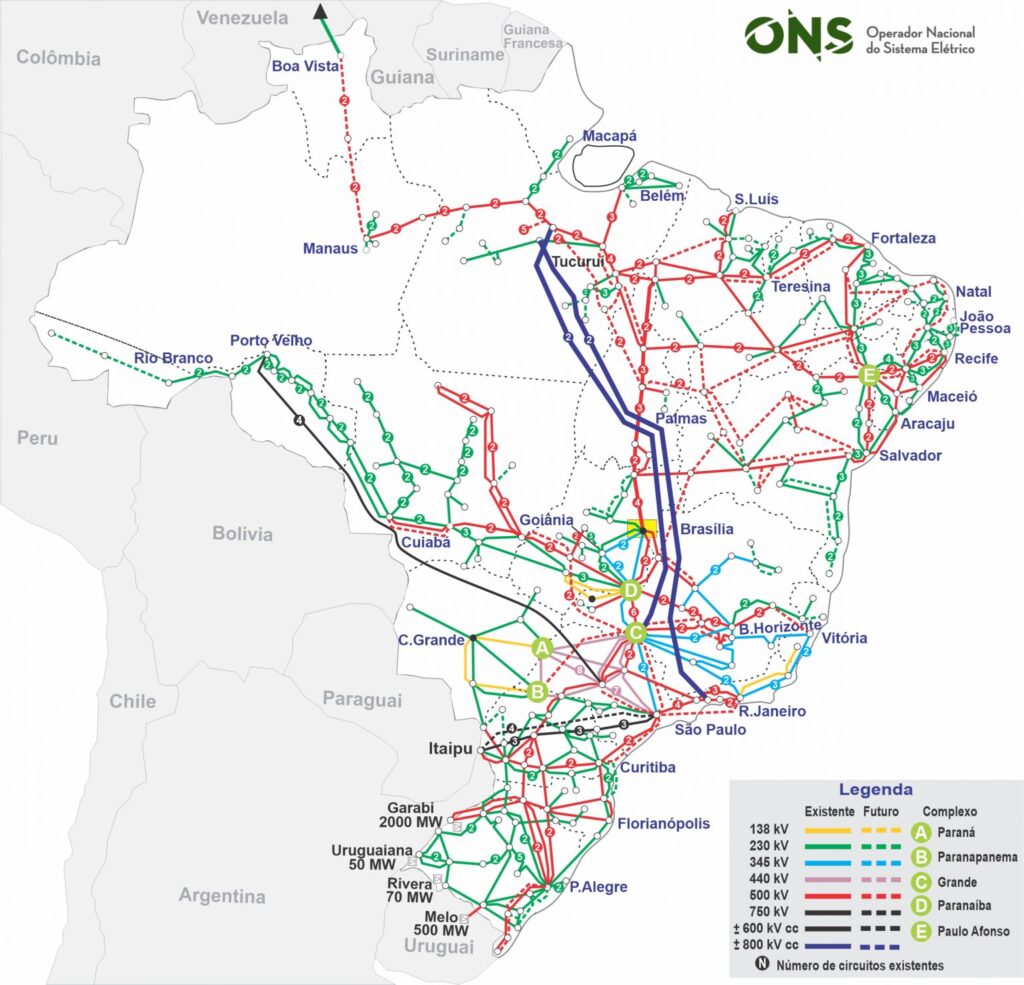The importance of Transmission Lines for the functioning of the National Interconnected System
As Brazil is a country of continental dimensions, in which energy production is often far from the large consumption centers, the good operation and maintenance of transmission lines is fundamental for the national electrical system.
The National Interconnected System (SIN) covers more than 98% of the country's energy generation capacity, leaving out only a small energy production in the northern region, and some isolated systems.
A Rede Básica de transmissão do Sistema Interligado Nacional (SIN), que compreende as tensões de 230 kV a 750 kV, tem quatro principais funções.
The 4 main functions:
1 - the transmission of the energy generated by the power plants to the large load centers;
2 - the integration between the various elements of the electrical system to ensure grid stability and reliability;
3 - the interconnection between river basins and regions with heterogeneous hydrological characteristics in order to optimize hydroelectric generation; and
4 - energy integration with neighboring countries.
Esse sistema permite o intercâmbio de energia entre as cinco regiões do país, que, no SIN, são divididas em quatro subsistemas: Sul, Sudeste/Centro-Oeste, Nordeste e Norte.
Line Extension
According to the ONS, in January 2023 there are 175,013 km of transmission lines, with the forecast of reaching 199,916 km in 2024. Brazil has the longest transmission line in the world, 2,539 km long, connecting Xingu to Rio de Janeiro.
Currently, the three voltage ranges with the largest extents are classified as follows:
1 – 500/525kV – 42318 miles
2 – 230kV – 40343 miles
3 – 600kV – 7963 miles
COTESA Engenharia is responsible for the Operation & Maintenance of 4472 miles of Transmission Lines, as well as 112 Substations, which are spread over 21 Brazilian states and the Federal District.

